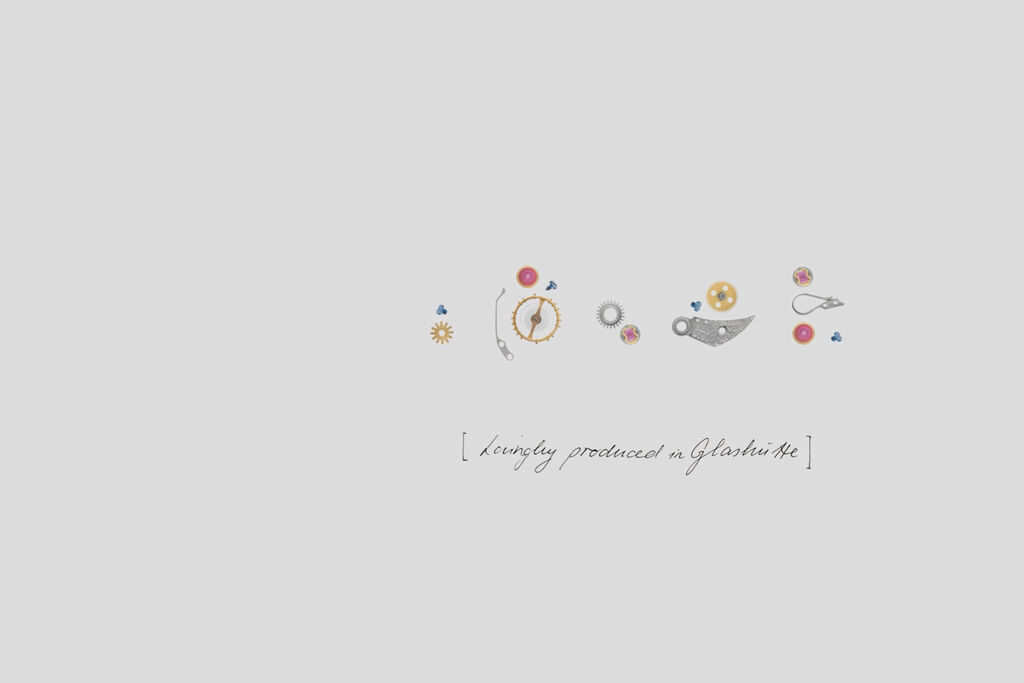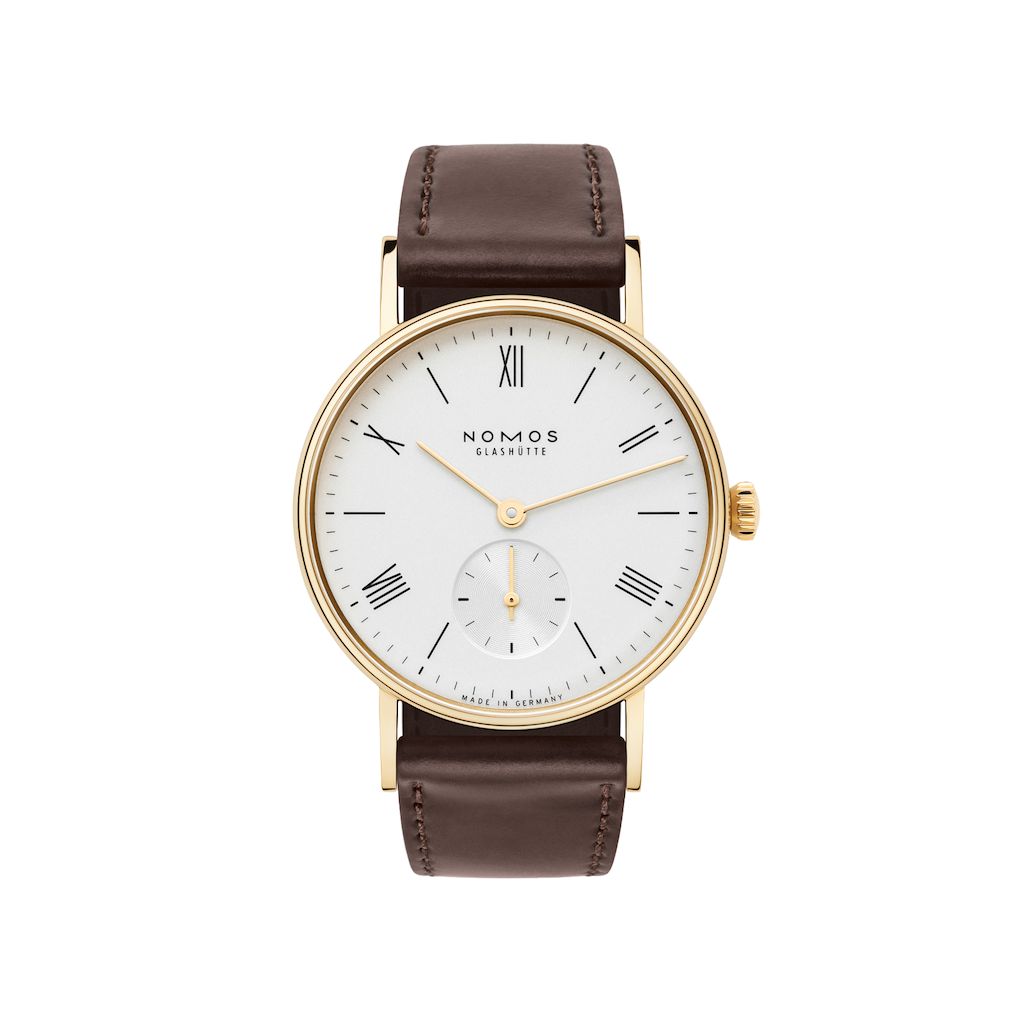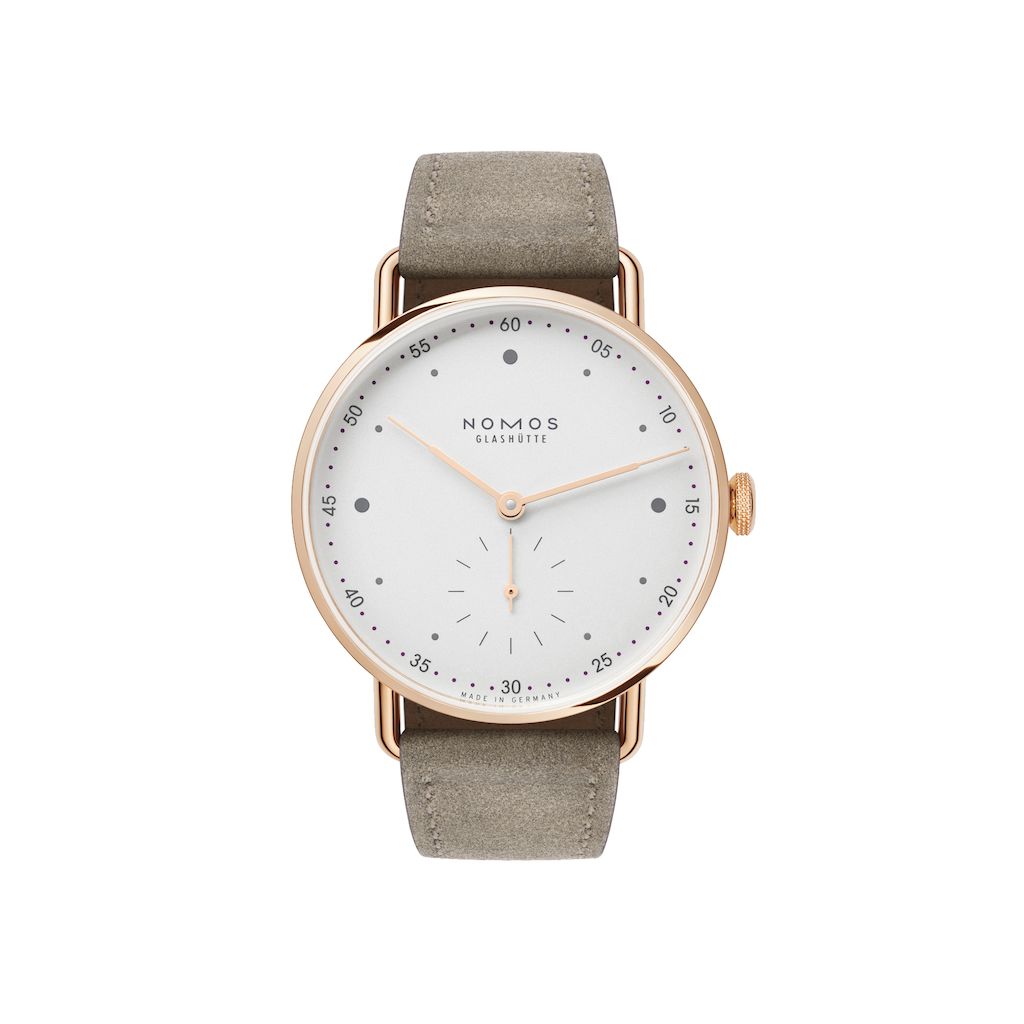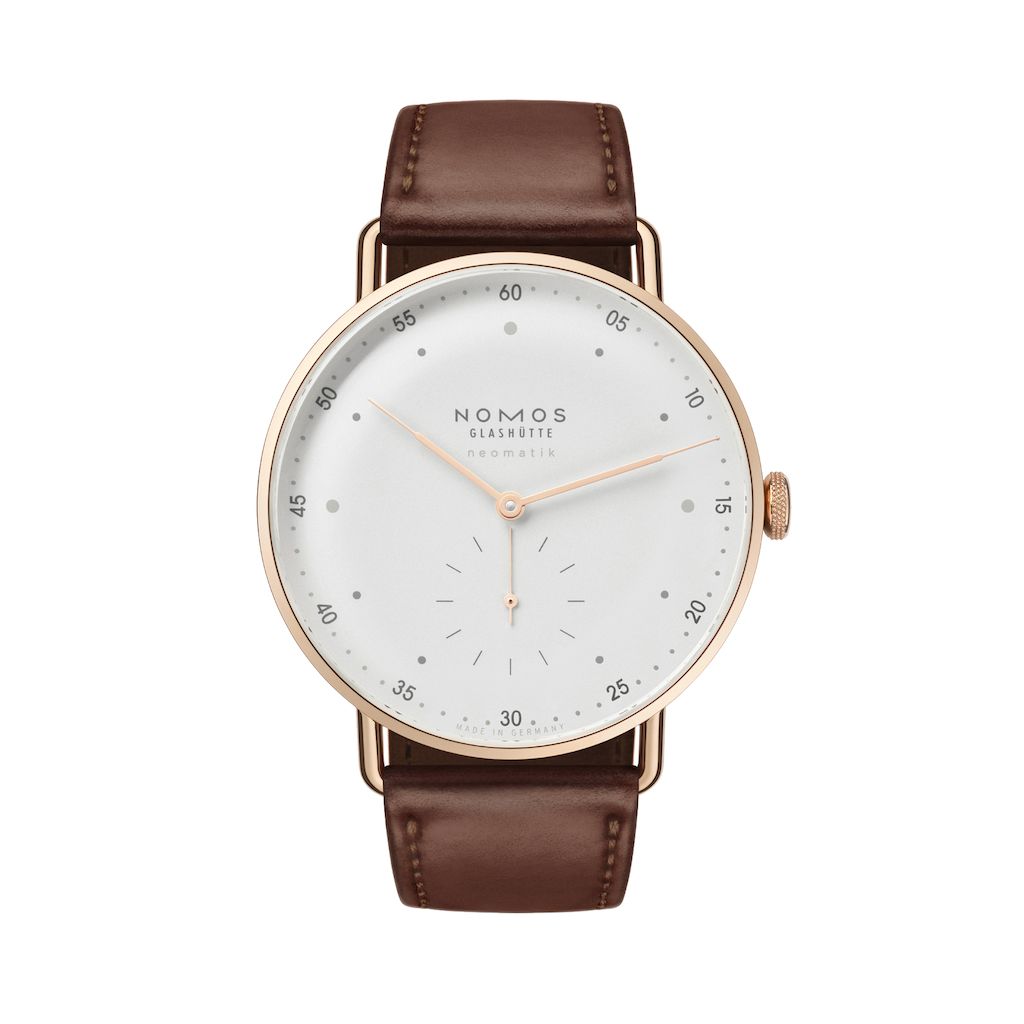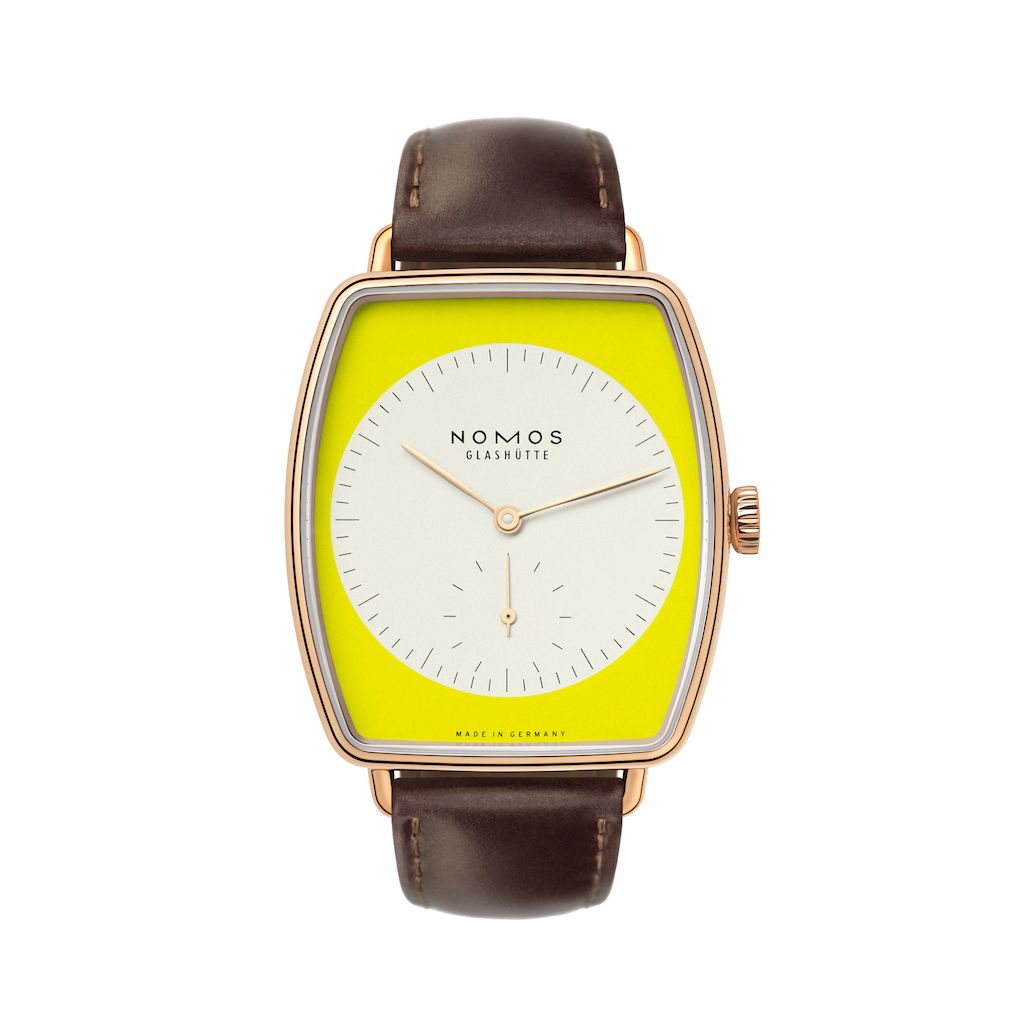A brief history of gold watches
The first evidence of gold mining and refining comes from burial sites discovered in Mesopotamia dating from 4600 B.C.E. It is believed that gold was refined in Egypt from 500 B.C.E. onward. The first pocket watches with cylindrical cases were produced in the early 16th century, first in Nuremberg and soon after in other regions and states. By the beginning of the 17th century, the oval shape had become prevalent, and by the 18th century, watches with round cases made of silver and gold had become established, with the silver cases often being fire-gilded and then polished to a brilliant finish. The golden tone of the rare precious metal expressed the value of these unique pieces, which very few people could afford. In 1810, Caroline Murat, Queen of Naples at that time, commissioned Swiss watchmaker Louis Breguet, who had settled in France, to produce a “watch with repeating movement on a bracelet”—the world’s first wristwatch had a flat, oval case of gold, and a strap made of hair intertwined with gold threads. In Switzerland, the first wristwatch was made in 1873 by Patek Philippe. Its golden case was attached to a golden bangle and the enamel dial was protected by a cover set with brilliant diamonds. At this time, men wore their watches on a chain in the pants or waistcoat pocket, while ornate golden wristwatches were made exclusively for women. Following World War I, wristwatches were mass produced and became affordable for more people. With the discovery of quartz as a means of powering wristwatches, they finally became an indispensable wrist accessory from the mid-1970s—with stainless steel as the case material of choice. Now as then, gold watches represent timeless luxury and the finest watchmaking skills. And now gold has also long established itself as a popular precious metal for elegant men’s wristwatches.
Material
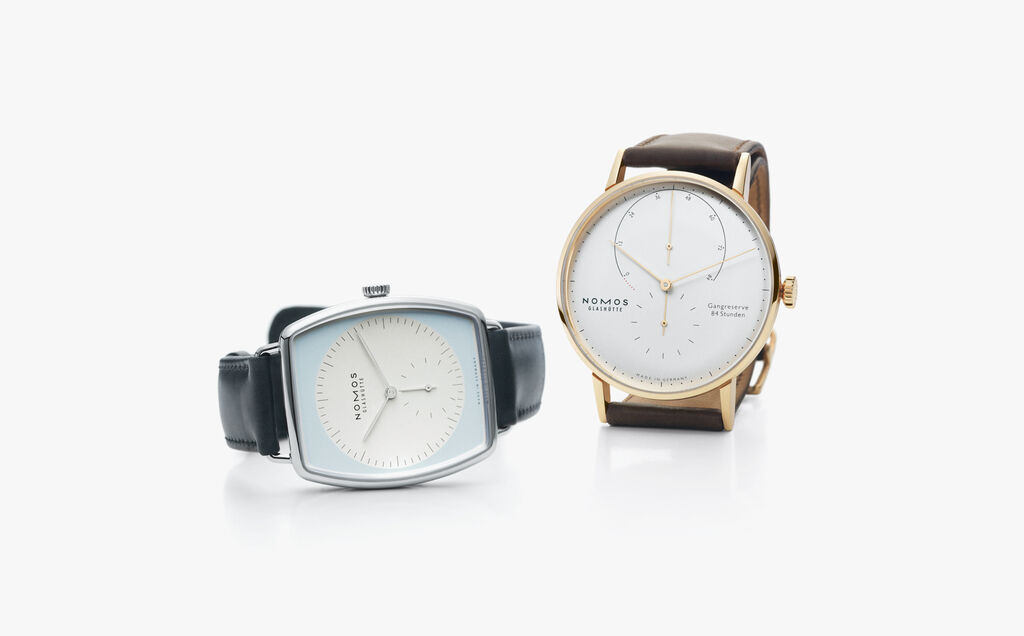
What is the difference between a gold watch and a gold-plated watch?
Gold watches are watches with cases of solid gold. In contrast, there are also gold-plated watches with stainless steel or brass cases—the cases of such watches are coated with a very thin layer of gold whose thickness is expressed in microns (10 microns are equal to a 0.01 millimeter thick layer of gold). The gold content of the cases of gold watches by NOMOS Glashütte is 75 percent (18 ct). The authenticity of the material is indicated by a stamp and a hallmark. The remaining elements of the yellow gold alloy are silver and small quantities of copper.
Gold watches for men and women make a beautiful gift and a popular investment. They are available in various sizes and come in a range of case shapes, from classic round cases to the tonneau case.
Where does the gold come from?
Gold is a rare precious metal found in the Earth's crust: The average gold content in the Earth's crust is very small at only 0.004 g/t. The largest gold deposits are found in Australia, Russia, South Africa, the USA, Indonesia, Brazil, Canada and China. Owing to its beautiful color and excellent processing properties, gold is a popular material for watch cases and jewelry. NOMOS Glashütte sources its gold from suppliers that meet the standards of the Responsible Jewelry Council and the LBMA (London Bullion Market Association). All suppliers sign the NOMOS Supplier Code of Conduct, which forms the basis for honest, ethical and cooperative collaboration.
What are yellow gold, white gold and rose gold?
To allow pure gold to dazzle in jewelry and watch cases, it is alloyed with other substances such as copper, palladium and silver, as gold with a purity of 99.9 percent would be too soft to process. There are various type of gold whose colors depends on the composition of the alloy. The higher the pure gold content, the more “golden” its hue. The pure gold content is indicated in karats (abbreviated to kt). These types of gold are commonly used for watch cases.
- Yellow gold: Yellow gold is an alloy in which silver and smaller amounts of copper are added to the pure gold, depending on the desired degree of hardness.
- White gold: By adding silver, nickel, platinum or palladium, the gold alloy assumes a radiant, almost white hue. White gold is a popular precious metal for jewelry and watches, as it has an understated and modern appearance.
- Rose gold: A higher copper content in comparison to a yellow gold alloy gives this gold its stunning hue, which can range from delicate rose to a more vibrant red.
Value
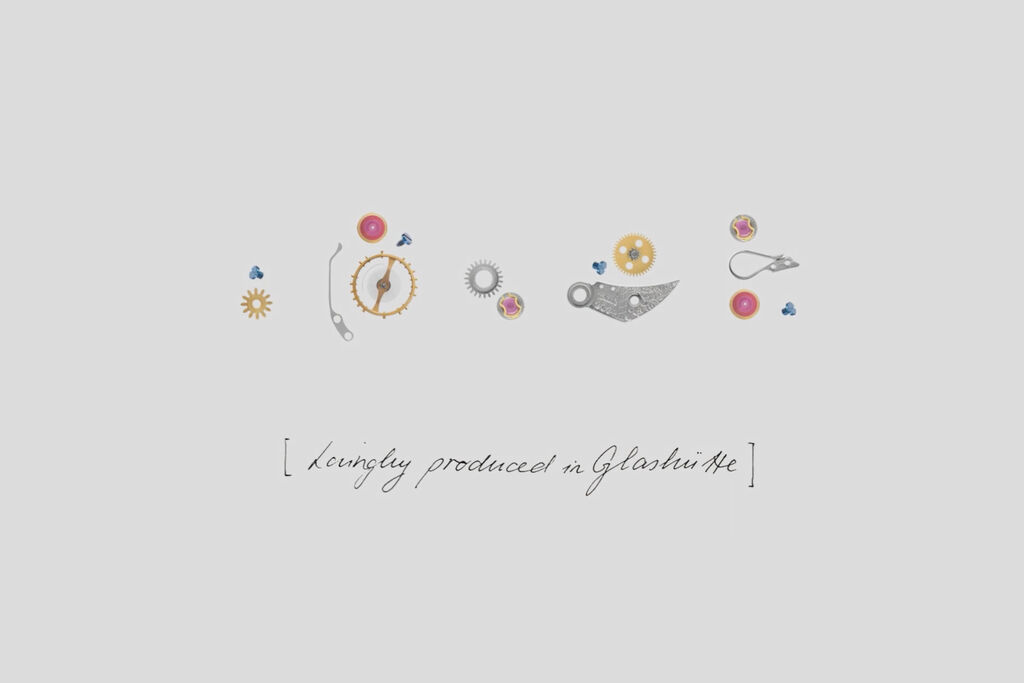
How do you determine the value of a gold watch?
Weight
One of the special material properties of solid gold is its high density. Compared to other metals, gold has a lower volume at the same weight. The particularly robust 316L alloy of stainless steel, for example, has a specific mass of 7.9 grams per cubic centimeter, while pure gold has a density of 19.32 grams per cubic centimeter. A watch case with an 18 ct pure gold content has a density of 15 grams per cubic centimeter, meaning watch cases made of gold are tangibly heavier than steel cases.
Hallmark and stamp
The requirements for specifying the precious metal content in gold products vary from country to country. Not only in the case of historical watches will you often find a hallmark—the German Stamp Act of 1848 sought to standardize the myriad markings and designations of gold content. In German-speaking countries, jewelers stamped an imprint of an imperial crown within a sun to their gold goods; for silver goods, they used a crown with a crescent moon. In France, the hallmark depicting the head of an eagle indicated a pure gold content of at least 750 parts in 1000. Hallmarking is common in the watch industry to this day, but it is no longer required by law in Germany. At NOMOS Glashütte, all gold cases are hallmarked with the head of a St. Bernhard dog (the official stamp of Switzerland), the gold content and the watchmaker’s mark; the official testing and stamping is conducted in Switzerland.
Caratage
In most countries, the caratage, abbreviated to “kt”, provides a reliable indication of the purity and thus the quality of watches and jewelry made from gold and silver. The caratage of a gold alloy indicates what proportion of its total mass consists of pure gold.
The gold content of an alloy in karats is equal to the proportion by weight in 1/24 parts. 24-carat gold contains 24/24 parts gold, but it is unsuitable for processing into jewelry and watch cases. An alternative to carats, the purity of processed gold can also be expressed in 1/1000 parts. Thus, 585 gold, for example, has a pure gold content of 585/1000 = 58.5 percent or 14 carats. 750 gold has a gold content of 75 percent or 18 carats.
Craftsmanship
Valuable gold watches (such as the Lux and Lambda NOMOS gold watches) also shine from within—the elaborate perfection of their calibers represents the highest quality and showcases the value of the watch and the skill of the watchmakers.
Gold market price
It is not only the purity of the gold alloy and the elaborately adorned proprietary caliber assembled by hand by watchmakers that indicate the value of a gold watch; ultimately, the gold market price is also decisive. The price of gold depends on global mining volumes, the price of oil and the exchange rate of the U.S. dollar. Especially in times of crisis, gold jewelry and gold watches are popular investments.
The most popular gold watches for men and women from NOMOS Glashütte
The NOMOS Glashütte collection includes gold watches for men and women in a range of sizes. The elegant hand-wound NOMOS Ludwig gold 33 has a case of 18-karat yellow gold and a small case diameter of 33 millimeters. The automatic Metro rose gold neomatik 39 also has a pure gold content of 75 percent (18 karats) and has been bestowed with the acclaimed German watches award "Goldene Unruh".
The NOMOS Atelier watches from the Lambda and Lux families have a case made of 18-carat white gold. These watches are veritable watchmaking masterpieces. Only few watchmakers are capable of what is required for the watches from the NOMOS Lux and Lambda model line. Their hand-wound calibers are made in the Atelier exclusively for these watches. The Lux and Lambda models are powered by the DUW 2002 and DUW 2001 proprietary calibers. The elaborate sunburst polishing creates beautiful light reflections on the rhodium-plated three-quarter plate, ruby-red bearings are enclosed by gold chatons and the edges of the movement surfaces are beveled and polished by hand. The twin mainspring barrel can store enough energy so that these watches can run for 84 hours without further winding. “Mit Liebe in Glashütte gefertigt” (“Made with love in Glashütte”) is inscribed on the hand-engraved balance cock—and you sense this at the sight of these two NOMOS watches.
What does “kt” mean?
In most countries, the caratage, abbreviated to “kt”, provides a reliable indication of the purity and thus the quality of watches and jewelry made from gold and silver. The caratage of a gold alloy indicates what proportion of its total mass consists of pure gold. The gold content of an alloy in carats is equal to the proportion by weight in 1/24 parts. 24-carat gold contains 24/24 parts gold, but it is unsuitable for processing into jewelry and watch cases. An alternative to carats, the purity of processed gold can also be expressed in 1/1000 parts. Thus, 585 gold, for example, has a gold content of 585/1000 = 58.5 percent or 14 karats.
Purity of jewelry made of gold and silver
The following gold alloys are common in Germany:
18 karat, 750 gold = 75 percent pure gold and 25 percent silver/copper
14 karat, 585 gold = 58.5 percent pure gold and 41.5 percent silver/copper
9 karat, 375 gold = 37.5 percent pure gold and 62.5 percent silver/copper/zinc
8 karat, 333 gold = 33.3 percent pure gold and 66.7 percent silver/copper/palladium/platinum/nickel
Is a gold watch a good investment?
Gold watches have both a material and immaterial value. They are popular investments, as valuable assets, due to the commodity price of the precious metal gold increasing over the years, especially in times of crisis. The price of gold depends on global extraction volumes, the price of oil and the exchange rate of the U.S. dollar. Gold watches are also of great symbolic value. They symbolize skilled craftsmanship and timeless luxury. Mechanical watches with yellow gold cases, or cases made from white or rose gold, often remain in the family and are passed down from generation to generation.
Questions of style
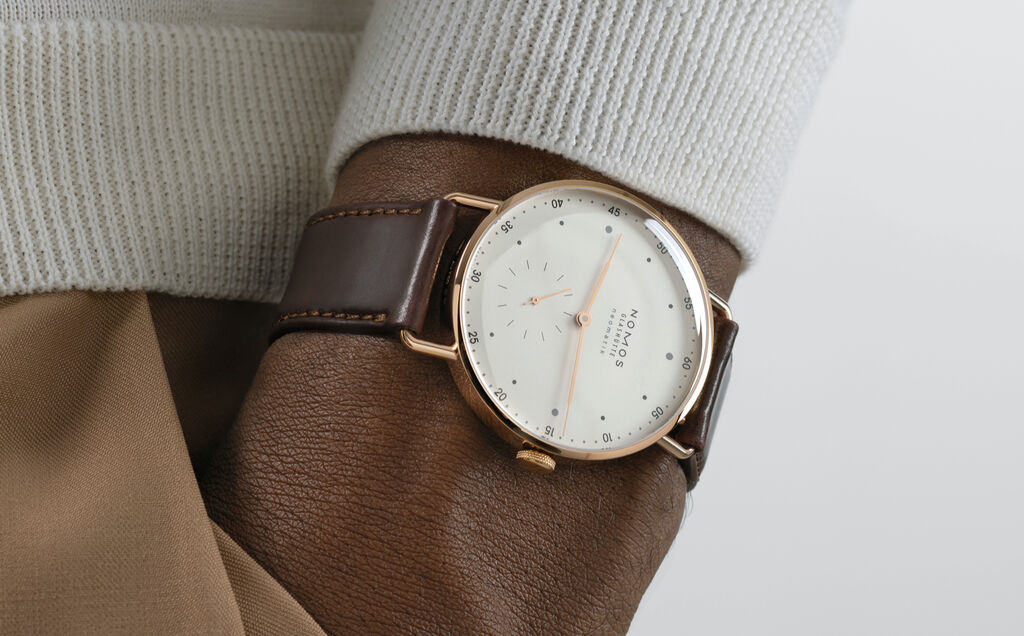
Are gold watches also suitable for men?
Yes, absolutely. While the first golden wristwatches at the end of the 19th century looked like pieces of jewelry and were made exclusively for women, watchmakers today produce these valuable timepieces with great dedication and skilled craftsmanship for men as well. They are available in a range of sizes, with hand-wound or automatic movements. In addition to yellow gold, brilliant white gold or the more understated rose gold are popular alloys for men’s watches. Heftier models work well with athletic outfits, while gold watches with slim cases are popular with evening wear, business suits or classically elegant leisure outfits.
How should a gold watch be worn?
There are no limits to your creativity when choosing an outfit to go with your gold watch. If you prefer to keep things classic, you can wear your gold watch with an elegant suit or tuxedo. However, a gold watch goes just as well with trendy jackets and dresses or a casual hoodie. We have compiled a few more suggestions and tips for you:
- The precious metal gold is softer than platinum and stainless steel and thus slightly more susceptible to scratches. When wearing a watch made from yellow, rose or white gold, you should take care that it does not rub against other pieces of jewelry such as bracelets or bangles.
- Gold watches look great worn with jewelry. A warm yellow gold case combines beautifully with bracelets, necklaces and earrings of the same gold alloy. White gold is radiant and understated—this easily paired alloy goes nicely with jewelry made of silver or rose gold. But here again, be true to yourself.
- Your gold watch should fit your wrist well and shouldn’t be too big or small. This is where choosing the right case diameter comes into play. At NOMOS Glashütte, you will find gold watches with small diameters of just 33 millimeters, such as Ludwig gold 33 and Metro rose gold 33. Metro rose gold neomatik 39 and Lambda 39 velvet black have a medium case diameter of 39 millimeters, and the large models, Lambda white gold and Lambda deep blue, have a diameter of 42 millimeters.
